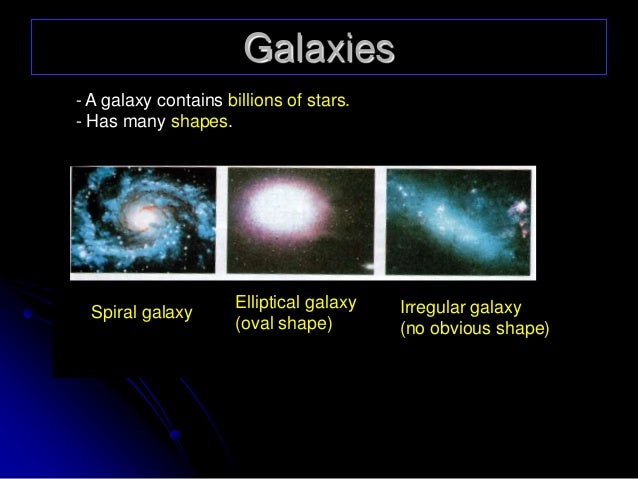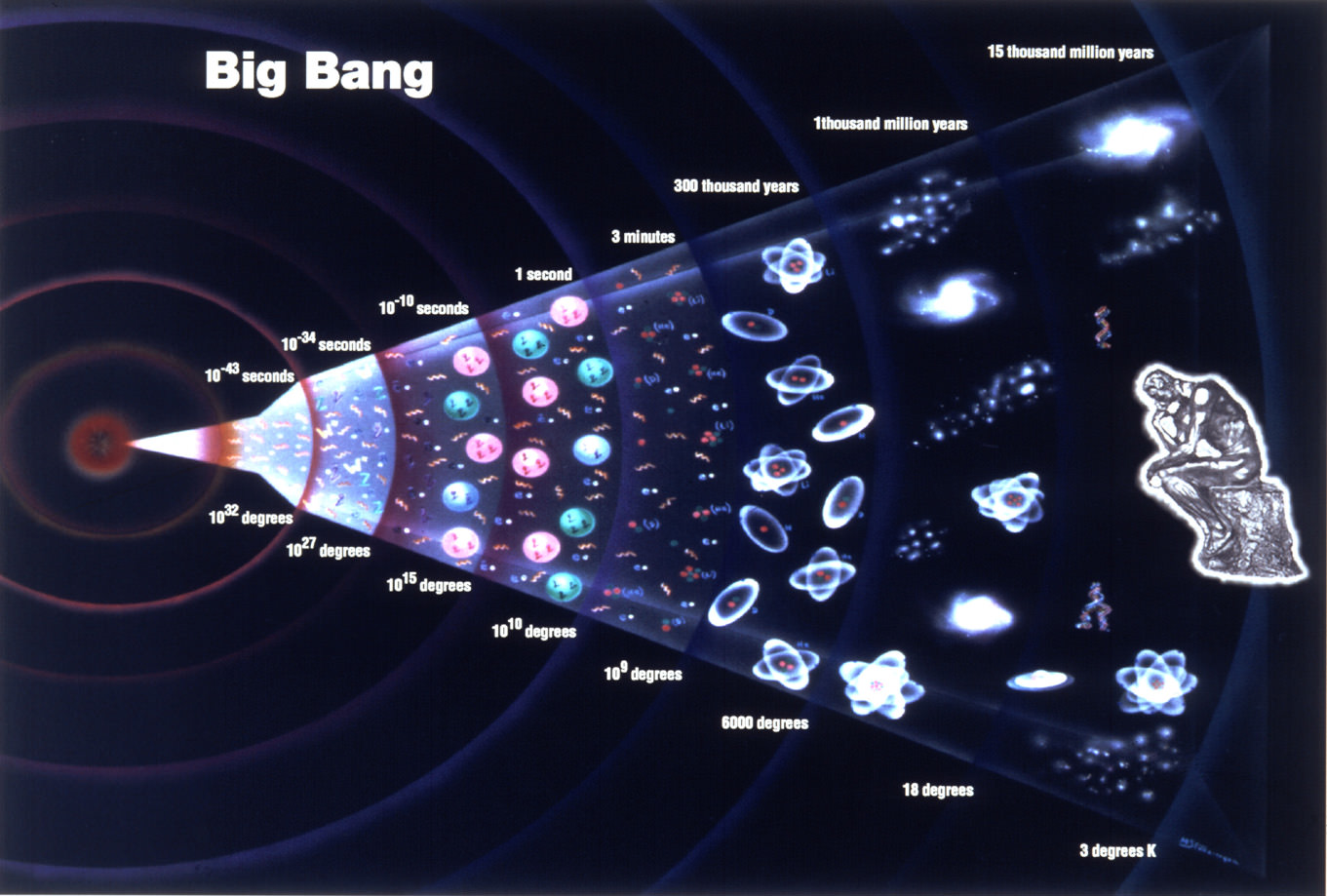Universe and the Earth:
Universe consists of millions of Galaxies. Galaxy is a gravitationally bound system of solar systems, stars, stellar remnants, interstellar gas, dust and dark matter. The name of our Galaxy is Milky Way Galaxy.
Age of Universe is said to be 13.7 billion years.
Structure of Universe:
1. Galaxy: Large group of many Solar Systems. On basis of shape there are 3 type of galaxies:
i. Spiral
ii. Elliptical
iii. Irregular.
2. Solar System:
Solar system is the collection of 8 planets, asteroids, kuiper belt, dwarf planets, meteoroids, comets and interplanetary dust with Sun at the centre.
There are mainly 3 theories regarding origin of Universe:
1. Big bang theory: It was proposed by George Lemaitre. According to this theory the Universe is formed due to the expansion of a hot, condensed single point called 'point of Singularity'. Initially the Universe permeated energy. Some of this energy is transformed into particles like Hydrogen and Helium. These atoms started interacting with each other to form galaxies, planets, stars and present day universe.
2. Steady State Theory: It was proposed by Hermann Bondy, Thomas Gold and Fred Hoyle. According to this theory is Universe is continuously expanding, however, maintaining a constant average density. There is no beginning or end of Universe. The matters are continuously created to form new stars and galaxies at the same rate that the old ones become unobservable as a consequence of the continuous expansion. Therefore the universe is expanding but the no. of galaxies is constant.
3. Pulsating or Cyclic theory: Proposed by Einstein, Richard Tolman and Freidmann. According to this theory at present the Universe is expanding. However, at some point of time it will stop expanding. After this it will start contracting due to effect of gravitational force and will again come to point of singularity. When it becomes a point of singularity it will again start expanding and a new Universe will be formed.
Some important terms:
1. Dark Matter: Unidentified matter and comprise approx. 27% of mass and energy of observable universe. It does not emit or interact with electromagnetic radiation and is indirectly observed from gravitational effect.
2. Dark Energy: Unknown form of energy and contributes approx. 68% of total energy in observable universe. It is believed that dark energy tend to accelerate expansion of Universe.
The cosmic distances are measured in terms of Light year or in terms Astronomical Unit. 1 light year is the distance travelled by light in 1 year in vaccum.
1 Light year= 9.45 x 1013 km=63000 Astronomical Unit approx.
Astronomical Unit is the mean distance b/w centre of the earth and centre of the sun.
1 Astronomical Unit=1.49 x 108 km.
Our next topic will be The Stars. Click on the link to directly go to the topic.
Universe consists of millions of Galaxies. Galaxy is a gravitationally bound system of solar systems, stars, stellar remnants, interstellar gas, dust and dark matter. The name of our Galaxy is Milky Way Galaxy.
Age of Universe is said to be 13.7 billion years.
Structure of Universe:
1. Galaxy: Large group of many Solar Systems. On basis of shape there are 3 type of galaxies:
i. Spiral
ii. Elliptical
iii. Irregular.
2. Solar System:
Solar system is the collection of 8 planets, asteroids, kuiper belt, dwarf planets, meteoroids, comets and interplanetary dust with Sun at the centre.
There are mainly 3 theories regarding origin of Universe:
1. Big bang theory: It was proposed by George Lemaitre. According to this theory the Universe is formed due to the expansion of a hot, condensed single point called 'point of Singularity'. Initially the Universe permeated energy. Some of this energy is transformed into particles like Hydrogen and Helium. These atoms started interacting with each other to form galaxies, planets, stars and present day universe.
2. Steady State Theory: It was proposed by Hermann Bondy, Thomas Gold and Fred Hoyle. According to this theory is Universe is continuously expanding, however, maintaining a constant average density. There is no beginning or end of Universe. The matters are continuously created to form new stars and galaxies at the same rate that the old ones become unobservable as a consequence of the continuous expansion. Therefore the universe is expanding but the no. of galaxies is constant.
3. Pulsating or Cyclic theory: Proposed by Einstein, Richard Tolman and Freidmann. According to this theory at present the Universe is expanding. However, at some point of time it will stop expanding. After this it will start contracting due to effect of gravitational force and will again come to point of singularity. When it becomes a point of singularity it will again start expanding and a new Universe will be formed.
Some important terms:
1. Dark Matter: Unidentified matter and comprise approx. 27% of mass and energy of observable universe. It does not emit or interact with electromagnetic radiation and is indirectly observed from gravitational effect.
2. Dark Energy: Unknown form of energy and contributes approx. 68% of total energy in observable universe. It is believed that dark energy tend to accelerate expansion of Universe.
The cosmic distances are measured in terms of Light year or in terms Astronomical Unit. 1 light year is the distance travelled by light in 1 year in vaccum.
1 Light year= 9.45 x 1013 km=63000 Astronomical Unit approx.
Astronomical Unit is the mean distance b/w centre of the earth and centre of the sun.
1 Astronomical Unit=1.49 x 108 km.
Our next topic will be The Stars. Click on the link to directly go to the topic.





Comments
Post a Comment